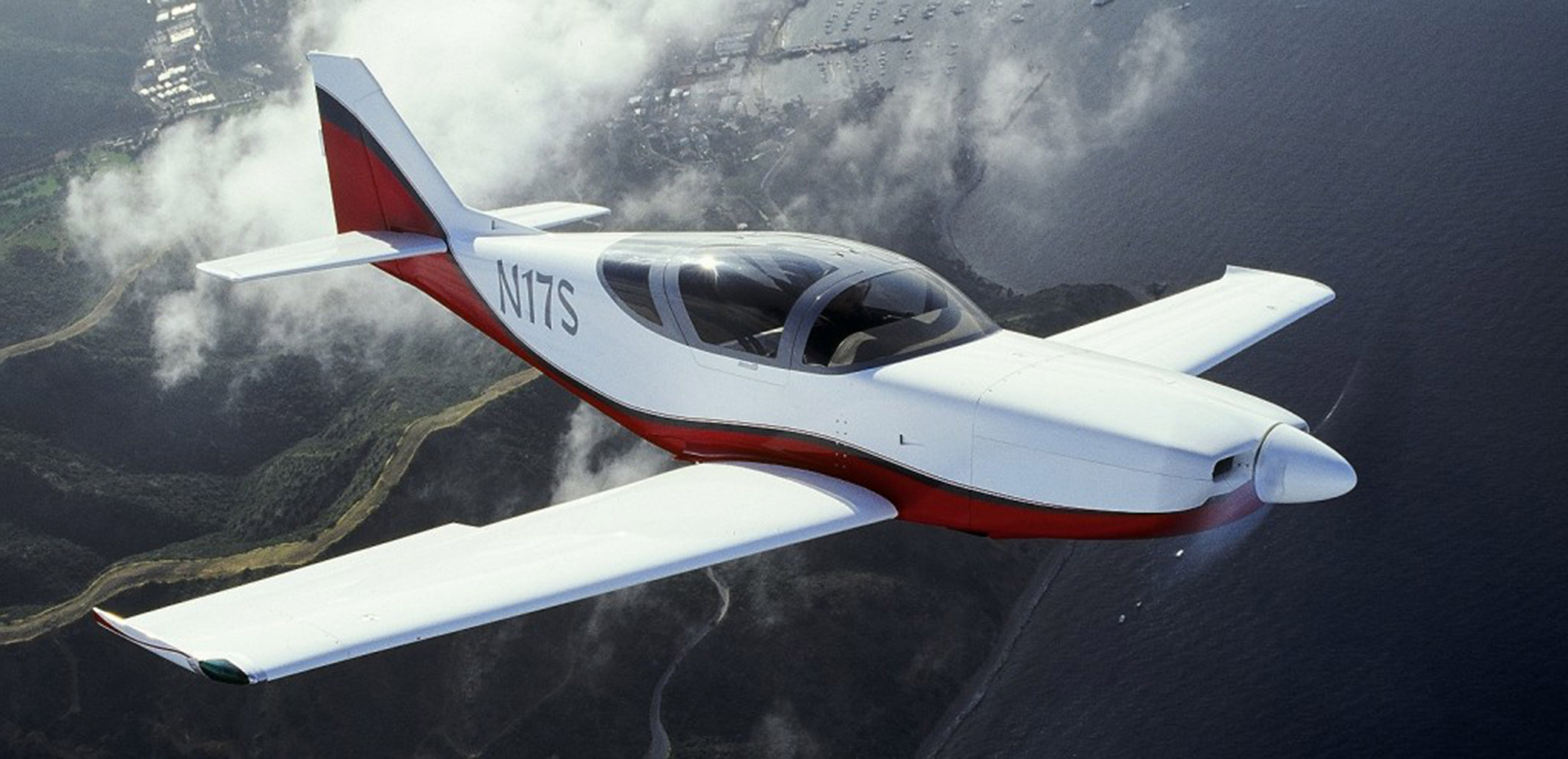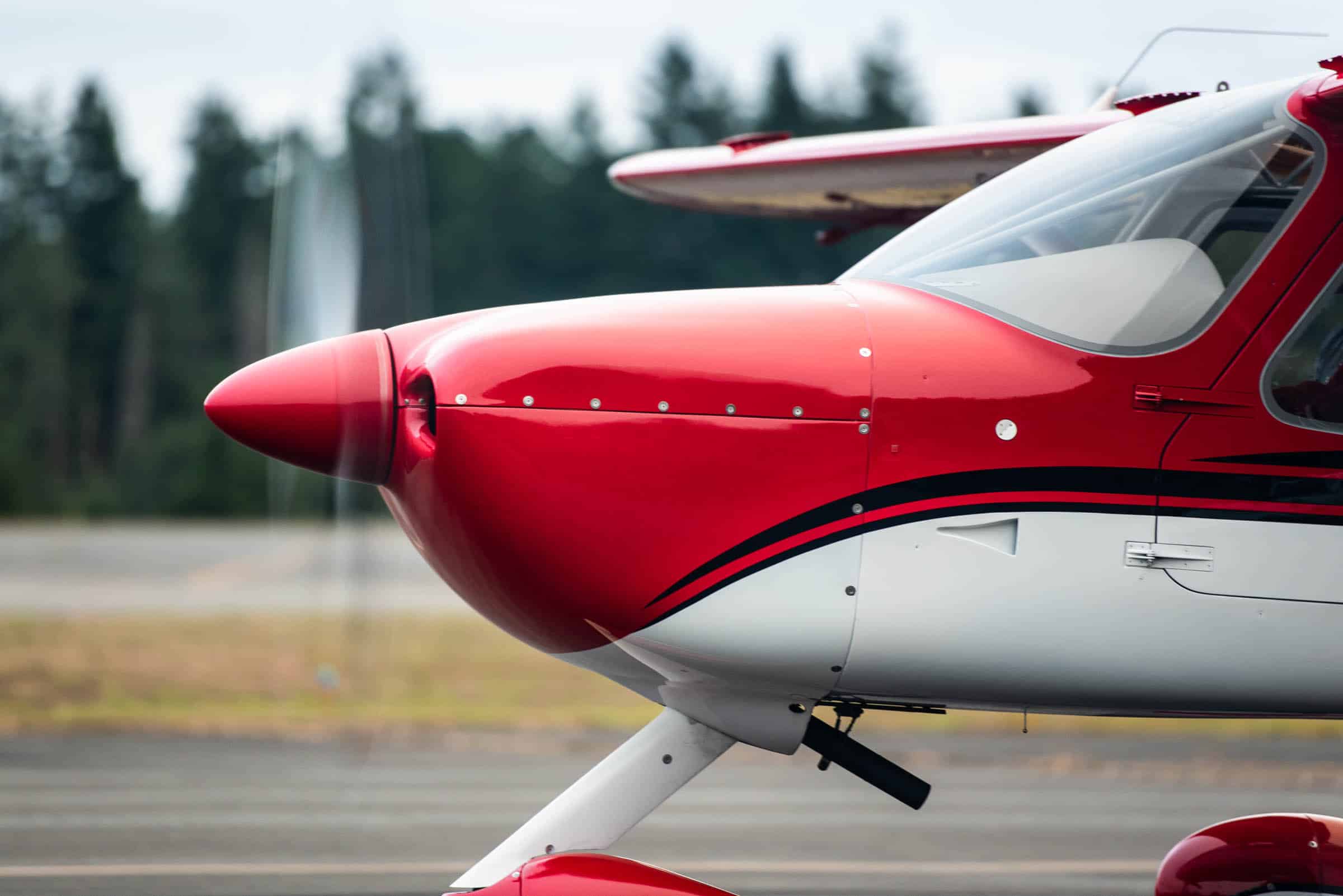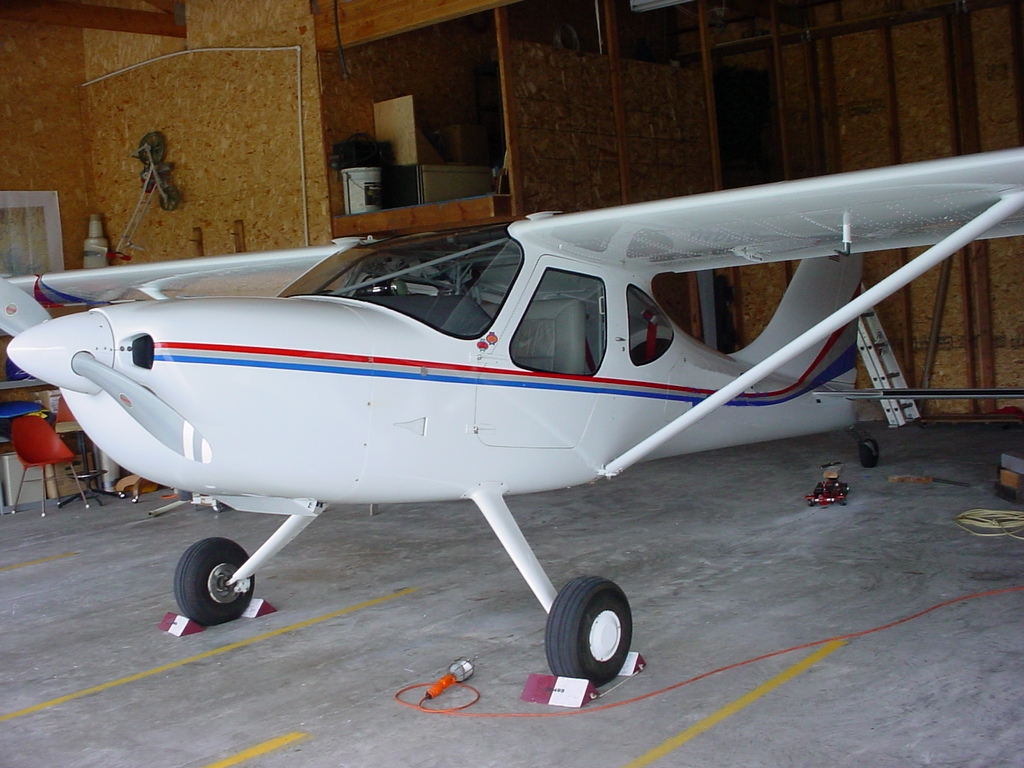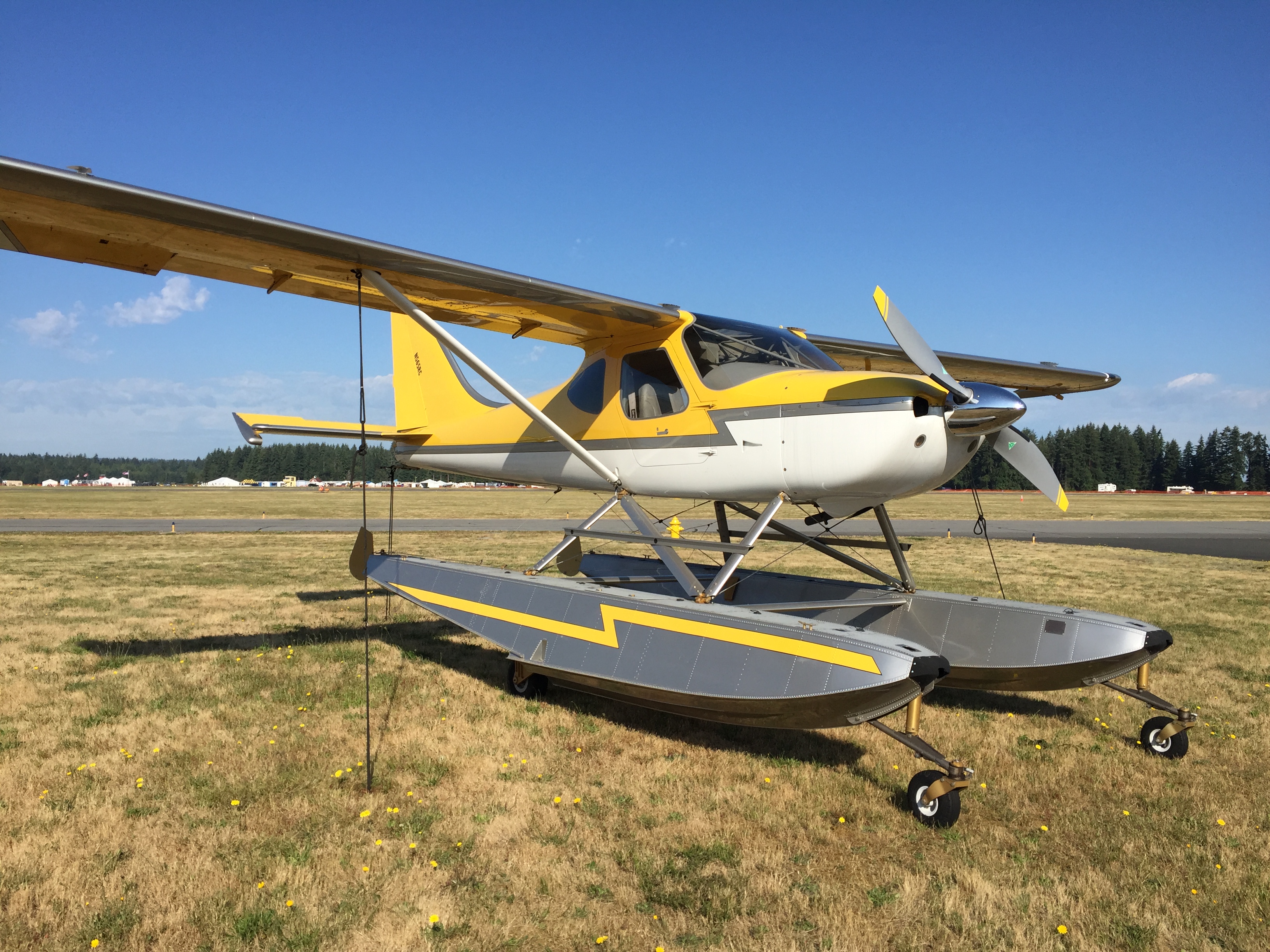Glastar Aircraft For Sale - There was also a service bulletin #25 that talked about cages that produced excessive differences in the angle of incidence of the wings, in which they declared that a variance of 1° was the maximum tolerable variation.
However, the truth of the matter is that any variation in excess of 0.1° produces undesirable flying characteristics. Some builders compensated for this by installing aileron trim tabs or adjustable aileron trim, but it is best to check the angle of incidence with a smart level and plan on correcting any discrepancy found by modifying the aft spar pivots.
Glastar Aircraft For Sale

A service bulletin that is easy to miss is #47 that calls for tightened clearances at cable guides. These guides should be fabricated out of 0.025-inch material with a maximum clearance of 0.04 inches. You just won't see that without taking a hard look at them.
Alex Kulpecz
This bulletin is important because under higher G loads some aileron cables can go slack, making it easy to come off a pulley. This could result in a jammed control. You will see many IFR-legal GlaStar panels if you are willing to limit yourself to VOR navigation, but the utility of such an arrangement seems limited if you have a real need to fly in instrument conditions.
Also be sure to check the logbook for the age of the vacuum pump if you are going with steam gauges. These pumps typically fail after 5-600 hours. If you are looking at a GlaStar based in a less-populated area and flown out of an uncontrolled airport, you may find that the plane is not equipped with ADS-B Out.
This will be an immediate expense for you if you need such equipment. Most older planes will also not have a 406 MHz ELT. There is no legal requirement to upgrade the old 121.5 MHz unit, but that frequency is no longer monitored by emergency services.
De-registration, disassembly and shipment to New Zealand was handled by a professional company near San Francisco. Because of the folding wing assembly and removable tail plane, reassembly was a piece of cake and was completed in two days by two people.
Jack Will
When you can't wait to get your aircraft shipping takes forever! Here are the major topics to consider: The history of the make and model, an overview of the design, what to look for with the specific make and model, engine options, typical avionics, common modifications, performance, and owner support—both factories
and user groups. As this series unfolds, we would welcome feedback from our readers so we can make this the best go-to source for prospective used E/A-B buyers. Maintenance costs are very low, even compared to the Cessna 150 and flew for 400 hours while building the GlaStar.
We do all the routine maintenance ourselves—oil changes, annuals, tires & tubes, and so on. We hired someone to do a mag change at 500 hours, but no other major money spent on the plane. Here are the major topics to consider: The history of the make and model, an overview of the design, what to look for with the specific make and model, engine options, typical avionics, common modifications, performance, and owner support—both factories

and user groups. As this series unfolds, we would welcome feedback from our readers so we can make this the best go-to source for prospective used E/A-B buyers. Everything about this airplane points to its being the right choice for me.
What To Look For
The irony is that the first GlaStar I saw at a Florida fly-in all those years ago is the airplane I now own. Many builders complied with these service bulletins as they were building and may have noted compliance in the builder log.
Unfortunately, that information may not be available to a subsequent buyer. Because of that, I would always urge builders to note service bulletin compliance in the permanent aircraft logbook. Like any homebuilt, it's best to get someone with experience to help you do any prebuy.
We're blessed with experts on the Glasair Aircraft Owners Association in every corner of the country. While looking for a GlaStar, I sought the help of Alan Negrin, Dave Prizio, and Joe Gauthier. Dave warned me off one that looked really good in the ads.
Joe helped with the prebuy on the one I bought. First thing he did was take the horizontal stabilizer off. The seller said, "I didn't know it did that." He's not mechanically inclined and had an A&P do all his maintenance, and he was pretty sure that guy didn't know the tail came off either.
Owner Support
And we found that the pins were loose. The Stoddard-Hamilton GlaStar made its debut in 1994, powered by a Continental IO-240, but before long everyone was using a larger engine. In fact, not more than two or three customer planes ever got built with the Continental engine, with the Lycoming O-320 and O-360 engines being the most popular choices because of cost and the plentiful supply of used examples.
A number of builders opted for various versions of the Subaru auto-engine conversion, but many of these planes have been re-engined with Lycomings after a string of inflight engine failures and other problems. As with any used Experimental airplane, it is important to review the records with a special eye to the compliance with factory service bulletins.
Most of these were likely addressed during construction, but a comprehensive record of compliance is a good sign of a conscientious owner. A complete list of all factory service bulletins can be found online. But that's not the end of the story.
New management at Glasair Aviation has pledged to support the two-seat GlaStars going forward, and since the GlaStar shares many parts with the Sportsman 2+2, there are many components still available that are common to the two.

Kathy Sutton
Between that and three private shops that work on GlaStars, there isn't much that can't be repaired or upgraded if an owner would need such services. In regard to the GlaStar nose gear, the attach fittings are very robust and have never suffered failure of any sort based on my 25 years of history with this design.
The nose gear is suitable for gravel or grass-field operations with the caution that wet, saturated "soft-field" operations should be avoided or performed with soft-field technique. The bad points? Can't find any bad points! Okay, access into the aircraft is a bit of an issue for larger and less flexible people.
A sliding seat arrangement would make my day. I would like some baggage compartment tie-downs and restraint equipment fitted permanently. When the GlaStar was first introduced, the numbers from the factory regarding performance and build times were, shall we say, optimistic.
A 75% power cruise speed of 145 knots was touted but never achieved by actual builders. With a 180-hp engine and a constant-speed prop, a cruise speed of 140-142 knots was possible under ideal conditions. With a smaller O-320 engine and a fixed-pitch prop, cruise speeds of closer to 130 knots were about the limit of what was possible.
Rick Beebe
Of course, speeds would vary with gear configuration, wheel pants and fairings, propeller type and pitch, and other factors like intersection fairings. I'm not a fan of the seat design. Sliding the back is very difficult, and the angle is not optimal for either my wife or me.
Mine has the original luggage door, and that's too small. I've been eyeing the Sportsman door mod, but it's expensive and may be beyond my skill level. So for now I just eat it. It's a little difficult for my wife to get into because the seats are so high and she has trouble getting her leg over the stick.
I guess I could have solved that by buying a Cardinal. Of special note are service bulletins #7 calling for a new strengthened control yoke weldment, #14 calling for added reinforcement in the tail, #43 calling for the addition of header tanks to prevent fuel starvation in long descents, and #49 calling for weld
inspection in a limited number of cages that had poor weld penetration. A few builders installed angle-valve IO-360 engines to get an extra 20 hp, but these engines were just too heavy to work well, leaving the planes with forward CG and excess empty weight problems, not to mention higher fuel consumption.
Alex Nelon
These problems could be offset by using a fixed-pitch prop, especially a composite prop, but that sort of defeats the purpose of going with a bigger engine. Needless to say, Lycoming clones by Superior or ECI (now Continental Titan) would be suitable substitutes for the same-size Lycoming engines.

A few builders installed angle-valve IO-360 engines to get an extra 20 hp, but these engines were just too heavy to work well, leaving the planes with forward CG and excess empty weight problems, not to mention higher fuel consumption.
These problems could be offset by using a fixed-pitch prop, especially a composite prop, but that sort of defeats the purpose of going with a bigger engine. Needless to say, Lycoming clones by Superior or ECI (now Continental Titan) would be suitable substitutes for the same-size Lycoming engines.
I've read at least one horror story about Subarus in Glastars, and thought that if I could get a plane with a Subbie, I could always re-engine it with a Lycoming, but your article seems to say it's better to find a Lycoming
Wayne Flower
powered Glastar to start with. I started building a GlaStar kit many years ago when posted in the UK (sold it because it was just impractical to have the wings in the UK and fuselage in the USA, then trying to mate them).
When I moved back to the USA, I bought a steam-gauge GlaStar and flew it for 8 years. Although having an SR20, then an SR22 on order while living in Europe, I never pulled the trigger, and stuck with Glasair and bought the GlaStar.
(I now fly a G3X Sportsman.) It's been over 20 years since Steve and I decided that the GlaStar was the project we wanted to build and fly. No regrets! We looked at a lot of other kit aircraft before settling on the GlaStar, and the decision was the right one for us.
Our choice reflected our mission, which was to have a good-looking and relatively fast utility aircraft that we would both be comfortable flying on long cross-countries for many years. The GlaStar has served us very well in this regard.
Common Modifications
The concept of the GlaStar was a two-place utility plane that could be easily built and easily stored saving the owner money, while delivering a wide performance envelope skewed somewhat towards the low speed range. Easy storage was to be facilitated by folding wings, which became a popular selling feature, but one that was rarely used once the plane was completed.
The features that most endeared the plane to future owners were docile stall characteristics, good short field performance, and a claimed 130-knot cruise speed. At the time its main competition was the RV-6 and RV-6A, a design that was clearly faster, but short on useful load and cabin space compared to the GlaStar.

A highly recommended modification is adding an aileron servo tab to the left aileron. This was made standard in the Sportsman and is easily done to the GlaStar. Without the modification the roll forces are rather excessive, especially at high speed, and not well coordinated with pitch forces.
The plane handles much nicer with the modification in place. Your buying guidelines should begin with a review of the previous KITPLANES® series on buying a used Experimental airplane. I will not repeat that information here except to say that it is important to do your homework on any used airplane purchase and be sure to get a competent prebuy inspection by someone familiar with the GlaStar.
Typical Avionics
This article begins a new series that takes off from our previous articles on buying a used Experimental/Amateur-Built airplane. Where the previous series took a broad look at the general topic of buying a used Experimental, in this series we will focus on one make and model of airplane at a time, going into the kind of detail a typical buyer would probably like to see.
This article begins a new series that takes off from our previous articles on buying a used Experimental/Amateur-Built airplane. Where the previous series took a broad look at the general topic of buying a used Experimental, in this series we will focus on one make and model of airplane at a time, going into the kind of detail a typical buyer would probably like to see.
Unfortunately, when Glasair came out with the Sportsman, they found that the similarity in production costs made it impossible to create enough of a price difference between the GlaStar and its younger brother to keep selling both kits.
Thus, even though it did not technically die until 2005, the two-seat GlaStar was effectively done by 2002. At the moment, Glasair Aviation no longer supports the GlaStar except with parts that it may share with the current Sportsman design.
Common Modifications
Even the fiberglass fuselage molds have been destroyed. Owner support is a mixed bag at this time. The Glasair Aircraft Owners Association (GAOA) is active and strong with many members who are glad to show a newcomer the ropes and offer support.
The association includes Glasair, GlaStar, and Sportsman owners and builders, but there are plenty of GlaStar owners and builders within the ranks, some with 20 years or more of building and flying experience. Performance improves with power—no surprise there.
Thus, planes with the O-360 engine will command a premium, as will planes with a constant-speed prop. This means that a buyer who plans to fly where the density altitude is high will really want to limit their search to a plane with 180 hp.

At lower levels the 150 and 160-horse engines will do a great job of getting you around economically, but at 10,000 feet density altitude there is no substitute for cubic inches. Now after all of these years, those numbers are unchanged, but she has become more attractive with age as there is a solid base of planes out there flying.
Engine Options
They are a known item and have a very good safety record. They have active factory support as well as a large group of owners here to help with issues as they may arise. That is huge in my humble opinion.
What are there, 500 flying examples more or less? That is impressive. A stall speed of 39 knots was listed but, again, was a bit optimistic—a number like 43 knots more readily achievable by actual owners.
That said, the numbers are pretty impressive for a utility airplane. There are certainly faster homebuilts—for instance all RVs except the RV-12—and there are aircraft that will land slower, such as the Super Cub and its many clones.
But the unique capabilities of the GlaStar are hard to match. You can put some fat tires on your GlaStar and land on a sandbar for a day's fishing. You can do that with an RV-8 once, but you will have to walk home.
Engine Options
You can make a Super Cub go 130 knots if you point the nose straight down, but…you get the idea. There are five bulkheads that builders were required to install in the fuselage beginning with the aft end of the baggage area and proceeding towards the tail.
There are a number of ways to screw these up, two of which are discussed in service bulletins, but none has resulted in a catastrophic failure to my knowledge. In any case, it is a good idea to have a knowledgeable person help you evaluate the construction of these important items during your pre-buy inspection.
glastar kit for sale craigslist, glastar sportsman for sale, glastar aircraft kit for sale, glasair project for sale, glasair sportsman 2+2 for sale, glasair glastar, glastar for sale barnstormers, glasair for sale by owner
0 Comments